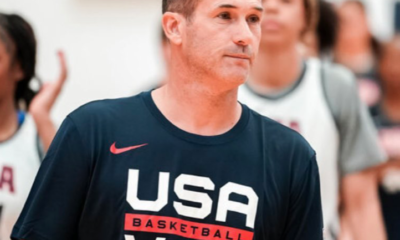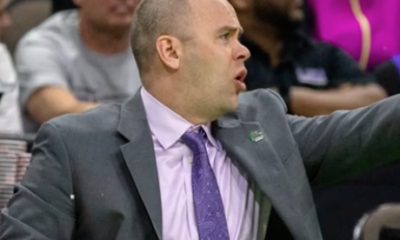Regional
Scoring In a Hurry
NCAA Moves the Line & Changes the Clock
(St. Louis, MO) – NCAA rule makers aim to please fans that want to see their teams scoring in a hurry. New college basketball rules aim to speed up the game, space the floor and have more teams look like the NBA and international games.
Recent seasons have seen officiating ‘points of emphasis’ with those goals and now the NCAA has made substantive changes that will alter the way the game is played. The NCAA is changing the three-point line and the way the shot clock is used.
This year the three-point distance will move to the international basketball distance of 22 feet 1 and ¾ inches. NCAA officials believe the result will be more dribble drive opportunities and reviving the midrange basketball options.
An intriguing change is what they’ve done to the shot clock. Once a shot has been rebounded by the offensive team, the shot clock will be reset to 20 seconds rather than the customary 30.
Scoring in a hurry is the goal.
The final two minutes of each half will have new wrinkles. Coaches will again be able to call ‘live-ball’ timeouts and officials will be able to utilize instant replay to evaluate goaltending and basket interference calls.
What Are The Coaches Saying?
Austin Peay’s Matt Figger believes moving the three-point line will create other offensive opportunities.
“The three-point line is a great move because it will allow better spacing, more one-on-one in the post because ‘close outs’ become two feet longer,” said Figger. “This will allow more dribble-drives. The shot-clock will force teams to play without a reset of offense which will allow more scoring.”
The always-innovative Bradley coach Brian Wardle says change is inevitable.
“Change is inevitable and we look at change as a positive and an opportunity to grow,” shared Wardle. “I believe ‘if it ain’t broke, break it’ because we have to keep making this great game better.”
During his playing days, Illinois State’s Dan Muller was the Missouri Valley Conference’s defensive player of the year. While he thinks the ‘instant offense’ rule changes are a good thing, he believes the early returns could be mixed.
 “I really like both changes,” stated Muller. “Obviously the shorter clock after offensive rebounds will add some more possessions to the game, which I think is great. This will have the biggest impact at the end of close games.”
“I really like both changes,” stated Muller. “Obviously the shorter clock after offensive rebounds will add some more possessions to the game, which I think is great. This will have the biggest impact at the end of close games.”
He is concerned about the three-point line change.
“Moving the three-point line back is a little scary,” said Muller. “There are a lot of fringe shooters that this will significantly impact this year. In time, all players will adjust but I think the first year could hurt a number of guys offensively. All in all, I agree it’s the right thing to do for our game and will help improve scoring, but next year could have a negative impact offensively. I guess we’ll find out.”
The Right Time for a Change?
This is a curios time to make such changes. The hunger for scoring in a hurry seems to be fulfilled. After decades of teams shooting 48% from the field, NCAA squads have topped 50% over the last two seasons. The national three-point percentage has been roughly 34% for decades (MVC teams made 35.7 % and OVC teams 35.8 last season). After eleven straight seasons where teams averaged under 70 points per game, they’ve spent five of the last six, including four in a row, over that mark.
Kenpom.com’s efficiency ratings have never been better. For 17 seasons prior to 2014, the record ‘Efficiency’ rating was 102.1. NCAA teams have tied or eclipsed that number six straight campaigns.
Perhaps spacing the floor will increase offensive rebounding opportunities. Grabbing caroms off the offensive glass is at an all-time low. The past four seasons have been the only ones on record where teams are collecting less than 30% of the offensive rebound chances.
So perhaps as Wardle is correct. If it isn’t broke, but we should go ahead and break it.
Scoring in a hurry is fun to watch.
Do Good















